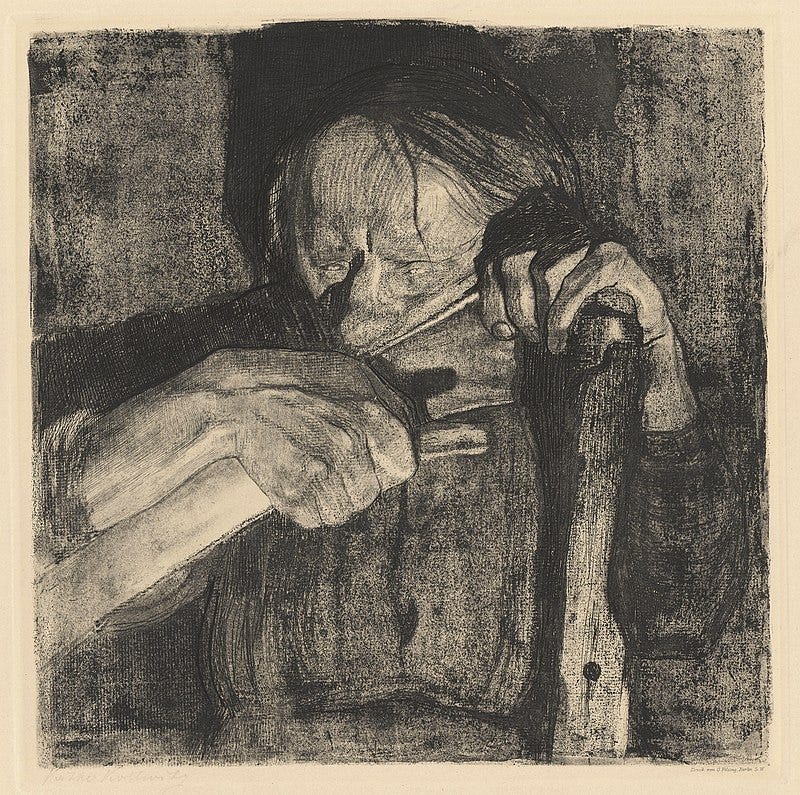A few more thoughts on how the aprons impact the NBA's labor balance
This conversation went in interesting directions.
Good morning. Let’s basketball.
Whetting the Scythe; Kathe Kollwitz; 1908
The comments on Thursday’s post about the hardening NBA salary cap being anti-labor were good and thoughtful. I wanted to respond to a few of the threads spinning out.
Here’s a good point from Reader Owen:
If the player's union concluded that an NBA with pretty consistent team identities and pretty high levels of parity was going to generate the most basketball related income, wouldn't it be pro-labor for them to agree to these rules and increase the pie?
If labor union leadership and the rank-and-file believe this is true, so be it. I think parity or competitive balance having a material impact on the NBA’s bottom line is a good theory that is completely unproven in reality. The most successful period of NBA growth in popularity featured multiple NBA Finals starring Larry Bird’s Celtics and Magic Johnson’s Lakers followed by a legitimate dynasty starring Michael Jordan and the seemingly unstoppable Bulls. The lasting legacy of popularity surviving the 2010s are the Warriors and the Lakers, and more specifically Steph Curry and LeBron James. This is reflected in ratings, jersey sales, online attention — all measures of popularity. I would argue that the evidence leans toward dominant individuals and teams being better for business, but again, I don’t know that this is provable.
What has led to the rise of basketball-related income over the past decade, leading to rapidly increasing salaries, is media rights income, which has exploded since the end of the Jordan era.
Keep reading with a 7-day free trial
Subscribe to Good Morning It's Basketball to keep reading this post and get 7 days of free access to the full post archives.



